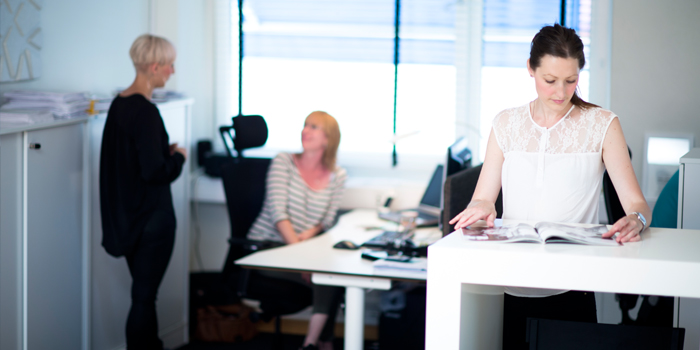
Plan for flexibility
The communication and information society has affected the design of the office. Companies are reducing office space and are offering their employees more flexible working arrangements. There are no fixed workplaces in the activity-based office. Everyone chooses the place that is suitable for the activity. Offices are planned on the basis of open spaces that are supplemented by partitioned rooms.
In order for the employees to thrive and be effective, complex planning is required with the option for communication and a social interaction as well as concentration and more formal meetings. The different locations are designed so that they can quickly and easily be adapted to the needs in question.
This places new requirements on light planning. Since the use of the space is made more efficient, the need for good, glare-free lighting in all spaces also increases. Using LED luminaires, it is possible to create good visual comfort and excellent light levels while retaining the energy efficiency.
Remember this:
• The user should have the option to control the lighting. The lighting requirement is individual and changes with age.
• Use the lighting to clarify the different functions of the spaces and give the room structure. The functions can be supported by the programmed scenarios for different luminaire groups.
• Suspended luminaires in connection with workplaces provide excellent light on the work surfaces. It is also more energy efficient than pure general lighting because the light is directly related to the task.
• The technology is an important part and a condition for activity-based offices. The lighting must not be reflected in screens and the lighting in meeting rooms must be planned especially with video conferences in mind.